Eco-dishes: features, types and selection criteria
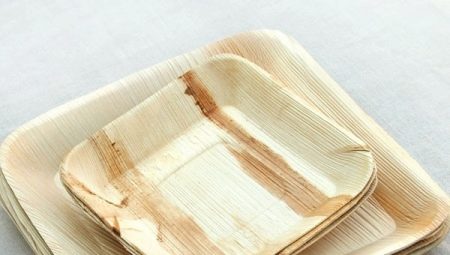
In the modern world, when choosing household goods, more and more attention is paid to their impact on human health and the environment. Therefore, it is worth considering the main features of eco-dishes, finding out what types of them exist, and also familiarizing yourself with the criteria that should be considered when choosing sets of such dishes.

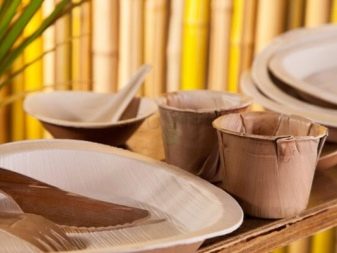
Characteristic
There are the following main criteria, which eco-ware must comply with:
- it must be made from natural materials;
- it should not contain substances harmful to the human body and the environment;
- harmful substances should not be released during its disposal.
Since the fight for the environment is currently in vogue, such dishes are often developed with the participation of the world's leading designers. The main disadvantage of such products is the higher price compared to plastic products, as well as the low availability of eco-friendly dishes at traditional points of sale such as supermarkets.
The presence of such dishes not only allows the owner to maintain health and help preserve nature, but also helps to express their civic position and promote eco-style.
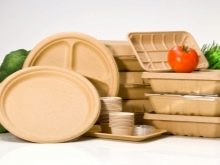

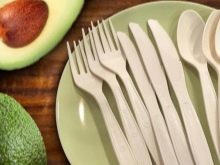
Varieties
According to the degree of environmental friendliness, three types of dishes can be distinguished, wearing the prefix "eco".
- Products from classic materials for tableware, such as glass and metal, which, through the use of modern production technologies, preserve the health of users. This category includes, for example, pans with a ceramic non-stick coating, which can reduce the amount of oil used in cooking and retain more vitamins and other nutrients in the food.

- Products made from natural materials, stylized as antiquity. These sets are most often made from stone, wood and clay. They are harmless to humans and nature, but they are not biodegradable.

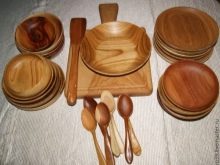

- Biodegradable products, which are not only safe for people and the environment, but also completely decompose in the soil within a period of 1 month to 1 year, thereby contributing to the solution of the problem of overcrowding in landfills. It is this type of tableware that is currently the most popular.
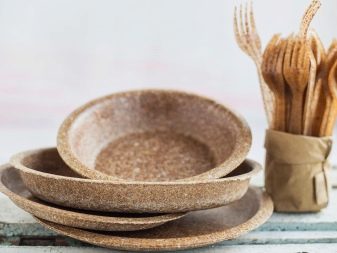
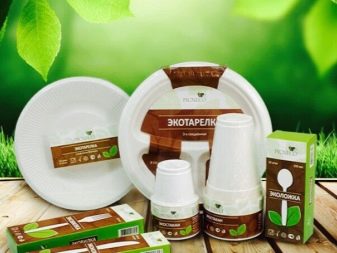
By appointment, the following types of such products are distinguished:
- disposable food utensils - since the main mission of eco-dishes is often considered to be the displacement of plastic, it is quite logical that it is in this segment that the greatest variety of goods on the market is observed;
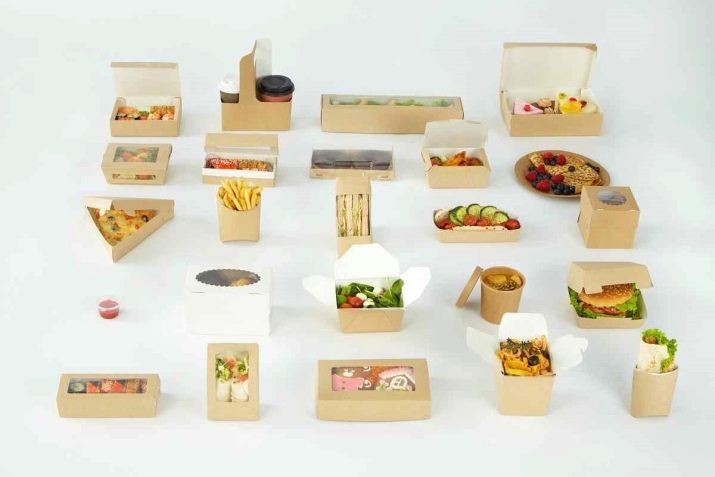
- reusable food utensils - these products are not yet as popular as disposable ones, and among them the most common are sets stylized as folk;

- reusable food items - biodegradability has a price, so usually biodegradable products are less durable and heat-resistant than traditional metal, porcelain and plastic products used for cooking; Because of this, at present, eco-friendly dishes for cooking are represented mainly by sets of wood, stone and clay.
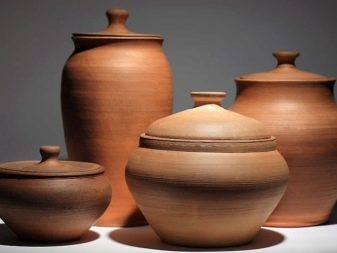
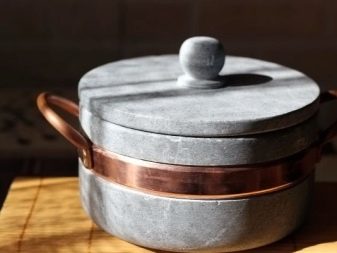
The most extensive classification of such dishes is according to the material of their manufacture. Let's consider in more detail the materials that are most common today.

Birch
Birch bark dishes are the most traditional for the Russian market, as they have been used since the days of Ancient Rus. Moreover, it is not only completely safe for nature and humans, but also has a number of healing properties due to the presence in its composition of betulin (birch camphor) - a natural antiseptic and biostimulant. Birch bark can be stored for a very long time, as it is resistant to mechanical damage and decay. On the Russian market, the most common Yakut wicker crockery in the folk style. Most often, sets of tues (boxes for storing food), mugs, bread bins and containers for spices are offered. The main disadvantage of birch bark products is their low resistance to high temperatures, so birch bark mugs should be used only for cold drinks, for example, juices and kvass.
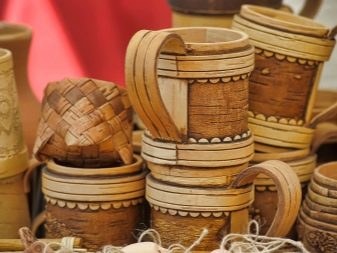
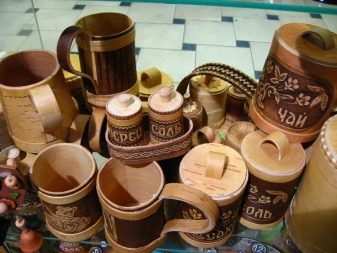
Straw
Wheat straw is another rediscovered crockery material that was used by our distant ancestors. Currently, such products are produced by grinding straw into a homogeneous mass and subsequent pressing. Most often, disposable lunch boxes and trays are made from straw. Such products are resistant to high and low temperatures and mechanical damage. When such dishes decompose, natural fertilizers are formed, so that they are not only safe for nature, but even useful.
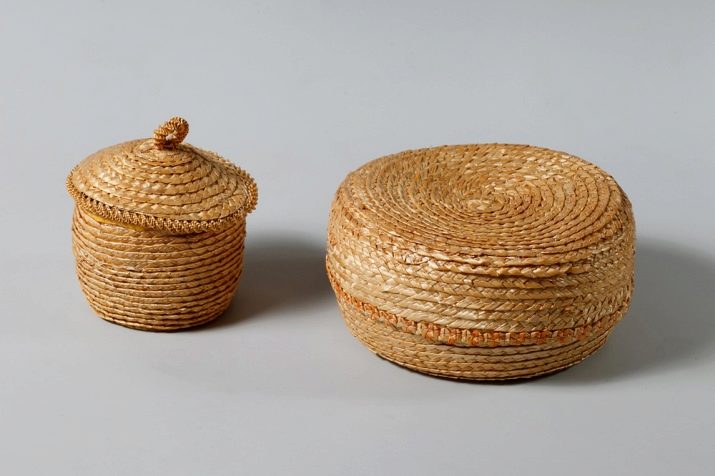
Coconut
Currently, the most common coconut shell bowls and plates that use coconut flakes as glue. They are durable and elegant, and make even the most ordinary day a little tropical holiday. Their main disadvantages are poor resistance to temperature extremes (they do not tolerate both freezing and strong heating), as well as the need for regular maintenance (wiping with coconut or linseed oil, hand washing instead of machine washing). In addition, they decompose in water, so they cannot be soaked for a long time.
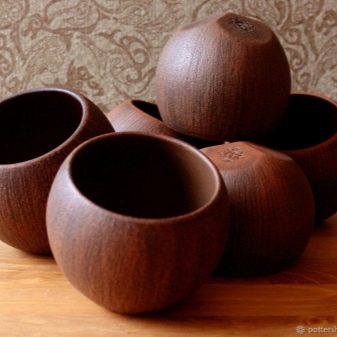
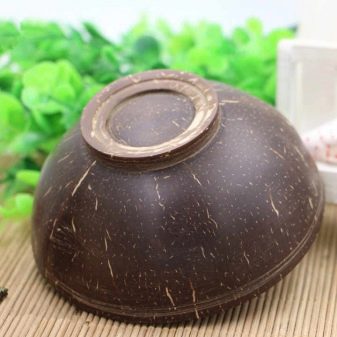
Palm leaves
For production, fallen leaves of palm trees are used, which are washed and pressed to give the desired shape, and then covered with food paint. Such dishes combine lightness, strength and resistance to temperature extremes. Its main drawback is low availability in the Russian market, where more traditional materials are common.

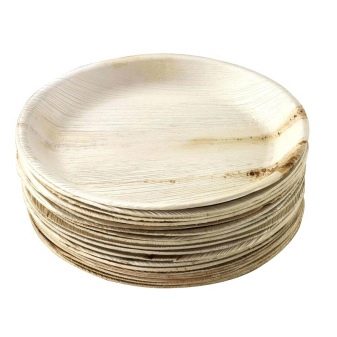
Corn
These products are made from corn starch by casting and stamping.In terms of lightness, strength, resistance to high and low temperatures, these products are in no way inferior to plastic ones. At the same time, being utilized in the soil, this material decomposes into water and carbon dioxide within 9 months. In contrast to the more exotic varieties of reed and palm leaves, corn ware is quite widely represented on the Russian market.

Cane
For this dish, bagasse (sugar cane) is used, which is crushed, squeezed out, boiled, poured into molds and dried. Finished products have excellent durability, tolerate both freezing and heating in a microwave oven, decompose in the ground in 5 months. The main disadvantage is poor resistance to liquids (no leakage guaranteed for 4 hours).
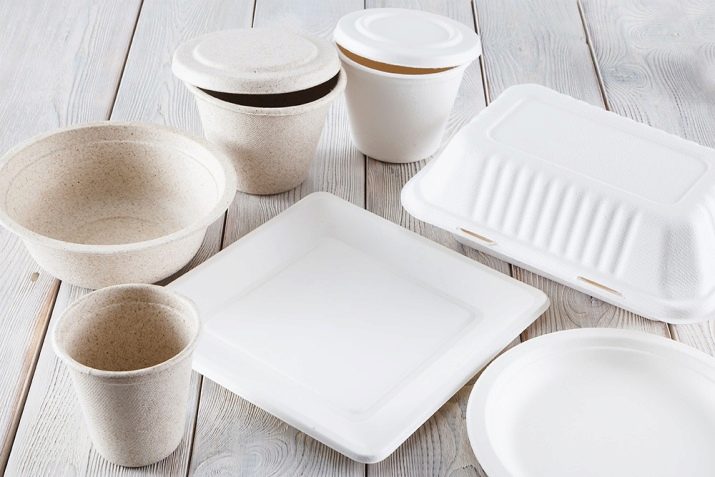
Bamboo
For production, bamboo stalks are used, which are crushed, pressed and varnished. Such dishes are highly durable, can be reusable, but they do not tolerate temperature changes well, moreover, they cannot be soaked. Despite its durability, fully biodegradable cookware can be disposed of within 3 months in soil or 2 days in water.
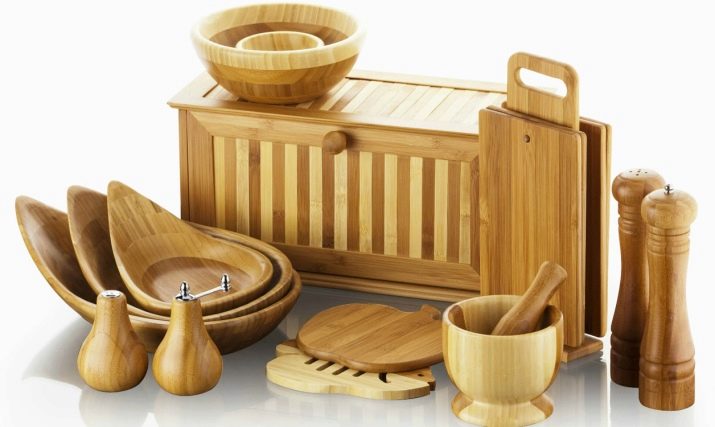
Other materials
Among other used for the manufacture of tableware materials the following are best known:
- waffle dishes - ice cream cups familiar to everyone from childhood not only meet all the criteria of eco-dishes, but also edible, which not only completely solves the issue of their disposal, but also guarantees their complete safety for health and the environment; we can say that waffle cups are the most common eco-tableware of our time;
- products from husk seeds - it is produced, for example, by the Russian-Chinese-Austrian company "EcoFrand";
- cinnamon options - traditionally, the manufacture of such dishes was a folk craft in Sri Lanka and Indonesia, it is from there that such sets most often end up in Russia as a souvenir; in their production, coconut shells and coconut flakes are used, and cinnamon serves as a decorative element, the properties of such dishes are similar to coconut;

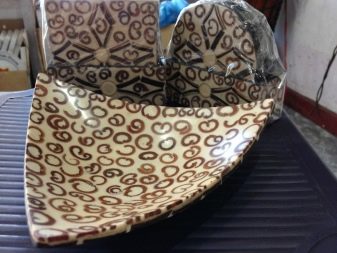
- avocado seed dishes - it is produced by Biofase, and its shelf life is up to 1 year;
- orange peel products - Israeli designer Ori Sonnenshey is engaged in their production; the advantage of these dishes, in addition to environmental friendliness, lies in the fact that they have a pleasant smell and elegant appearance;
- carrot rind and peanut shell options - these dishes are made by the Italian company Who Made from recycled food waste;
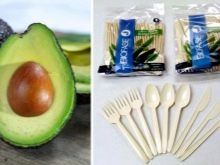
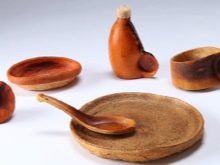
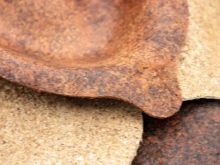
- vegetable / fruit puree products - a group of Russian scientists from Samara is developing a technology for the production of cups from mashed potatoes (in particular, apple); the advantage of such options is that they are not only environmentally friendly, but also edible;
- coffee grounds products - Dutch startup Kaffeeform is engaged in the production of such mugs; products made from this material are not only environmentally friendly, but also highly durable;
- dough dishes - the idea of making edible spoons belongs to the Bashkortostanian Vadim Fattakhov; Since 2017, the startup he created has been collaborating with cafes and restaurants in Russian megacities.



How to choose?
You will learn about the advantages of eco-dishes in the next video.








